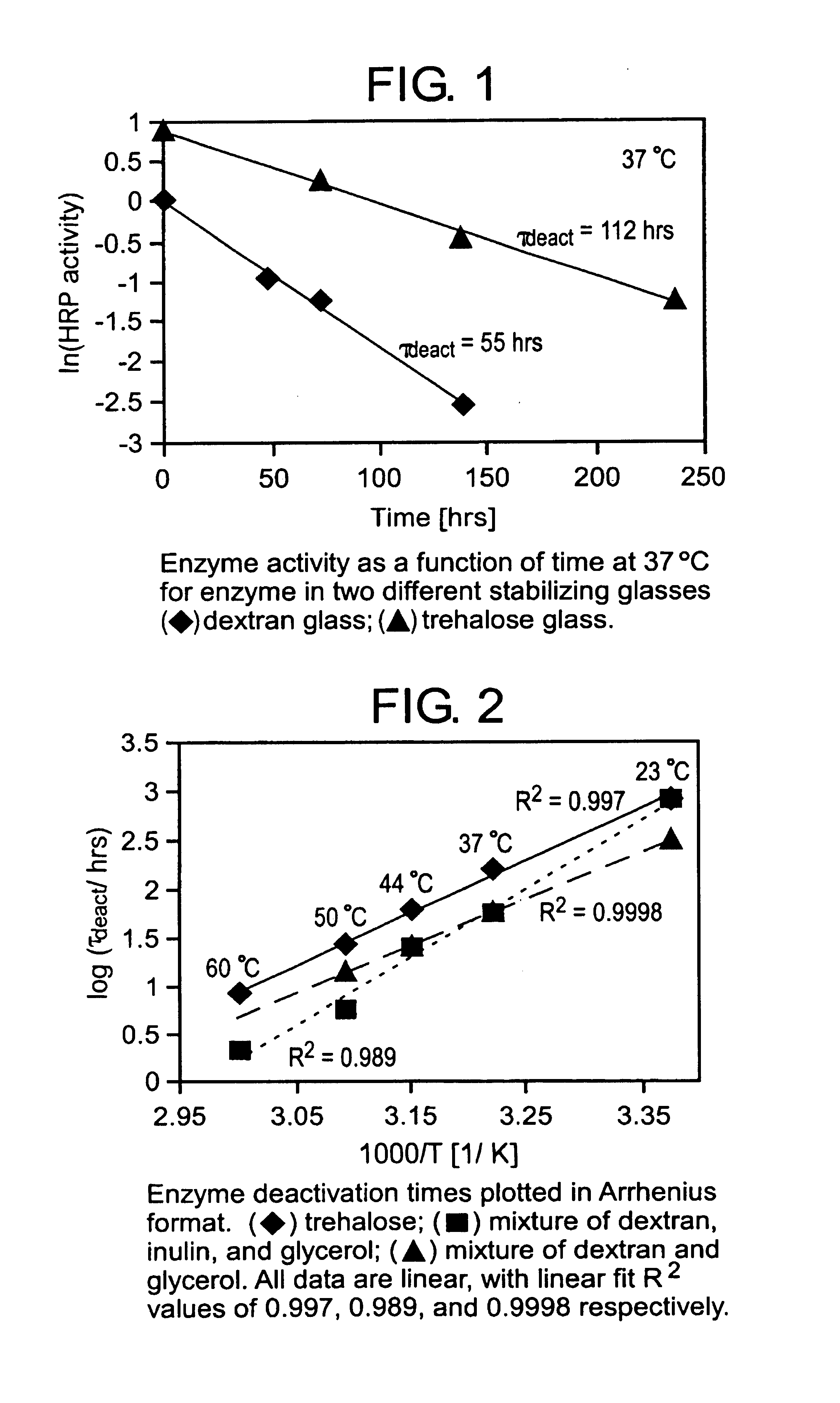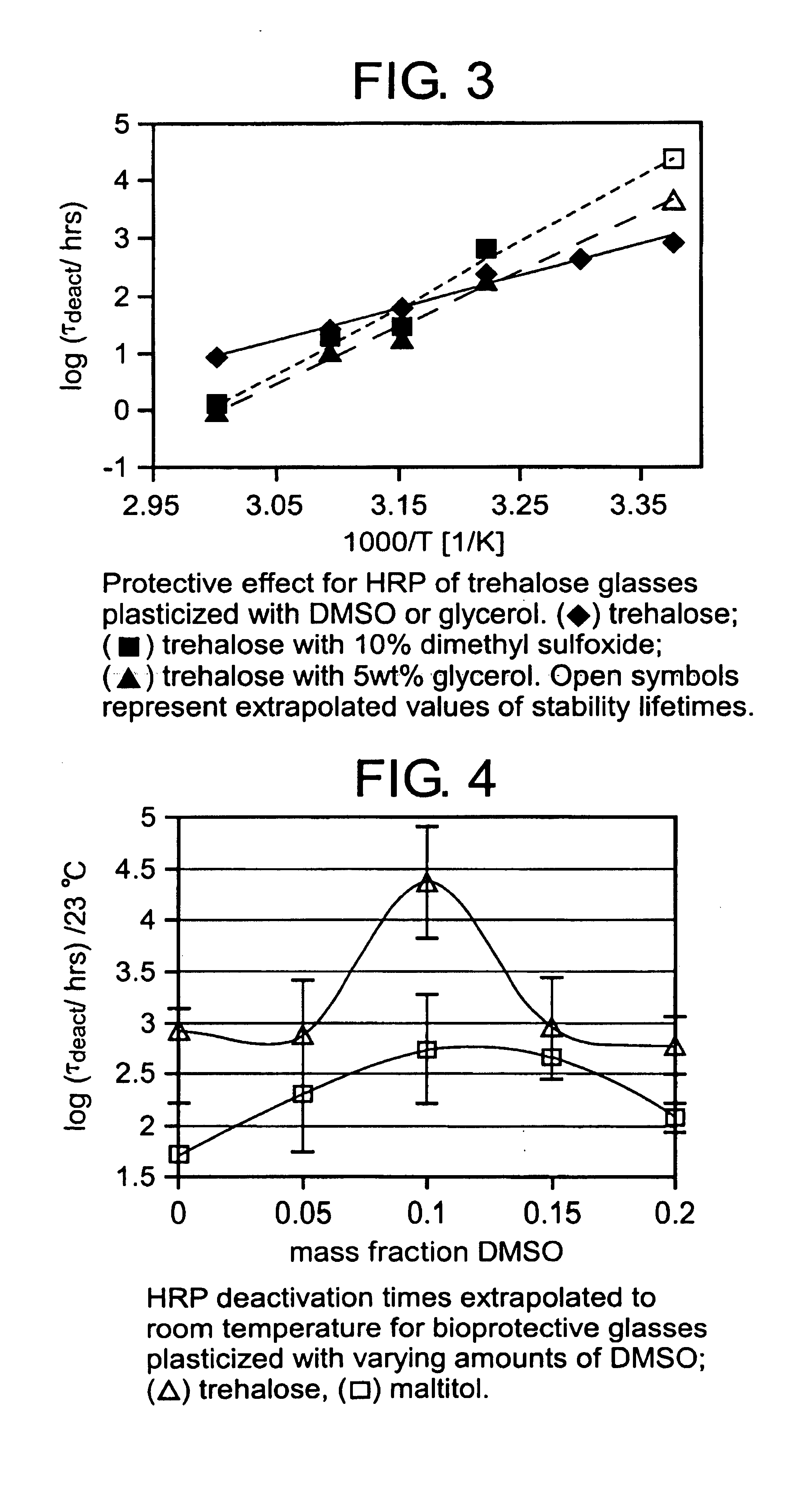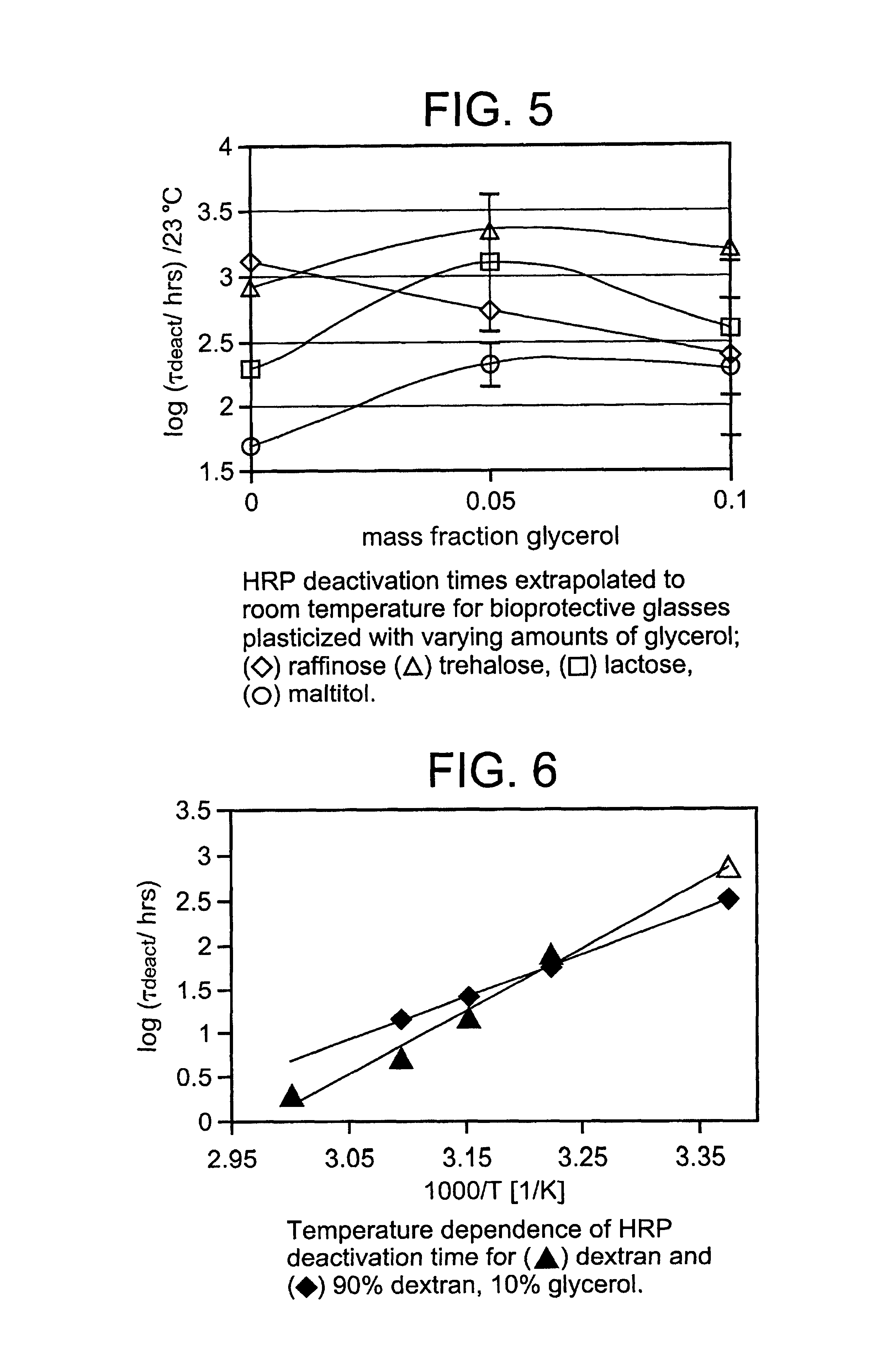Plasticized hydrophilic glasses for improved stabilization of biological agents
a technology of hydrophilic glasses and biological agents, applied in the direction of enzyme stabilization, nitro compound active ingredients, instruments, etc., can solve the problems of poor material glassformers, and achieve the effect of slowing down the dynamics of glass and reducing the lengthscal
- Summary
- Abstract
- Description
- Claims
- Application Information
AI Technical Summary
Benefits of technology
Problems solved by technology
Method used
Image
Examples
Embodiment Construction
[0036]Described hereinafter are the detailed results of research into improved formulations for bioprotective glasses. A suitable method is described for sample preparation, although it should be understood that other known techniques can be employed to prepare the formulations of the invention. While freeze-drying was used to make the samples, other techniques such as spray-drying and vacuum-drying, can be used. The materials used in the following examples are for illustrative purposes only. The examples are intended to be merely exemplary and in no way limiting.
Materials
[0037]All enzymes, reagents, glassforming materials, and plasticizers were obtained from Sigma, except for poly-vinyl alcohol (PVA), which was obtained from Spectrum. All materials were used as received. Unless specified otherwise, dextran refers to 70 k MW dextran, ficoll refers to 70 k MW ficoll, PVP refers to K 29-32 polyvinylpyrrolidone, and PVA refers to poly-vinyl alcohol (24-32 cps @ 4% in H2O, and 20° C.). ...
PUM
| Property | Measurement | Unit |
|---|---|---|
| temperature | aaaaa | aaaaa |
| Tg | aaaaa | aaaaa |
| Tg | aaaaa | aaaaa |
Abstract
Description
Claims
Application Information
 Login to View More
Login to View More - R&D
- Intellectual Property
- Life Sciences
- Materials
- Tech Scout
- Unparalleled Data Quality
- Higher Quality Content
- 60% Fewer Hallucinations
Browse by: Latest US Patents, China's latest patents, Technical Efficacy Thesaurus, Application Domain, Technology Topic, Popular Technical Reports.
© 2025 PatSnap. All rights reserved.Legal|Privacy policy|Modern Slavery Act Transparency Statement|Sitemap|About US| Contact US: help@patsnap.com



